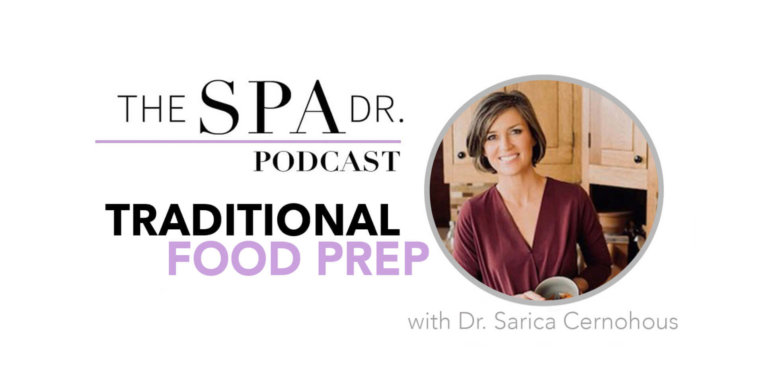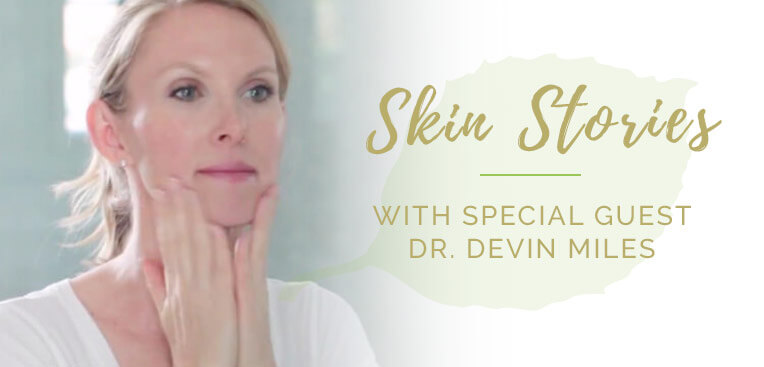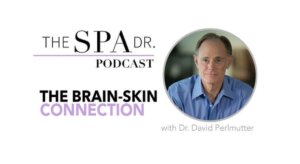On today’s podcast we’re discussing Traditional food preparation techniques and their benefits in digestion and weight optimization.
Dr. Sarica Cernohous is a practitioner of Acupuncture and Chinese Medicine, using Japanese-style methods, LED light therapy and herbal medicine in her private practice. She is the author of the importance and practical application of traditional food preparation techniques, The Funky Kitchen, and its accompanying online course, “Fresh, Fun and Flavorful in The Funky Kitchen”, and is a coach for Metabolic Balance of Germany, from which she has crafted a personalized weight-optimization and lifestyle program, The LAPIS Method. Since 2011 she has been sharing recipes and health articles on her website, NaturallyLivingToday.com. Sarica is a board member for the National Association of Nutrition Professionals (NANP), and resides with her family in northern Arizona.
On today’s podcast, Sarica shares benefits of traditional food preparation and tips on foods such as fermented vegetables and bone broth. She shares how her kitchen is like a lab and what she’s learned along the way. As well as what she’s seen in her patients’ weight and wellbeing.
So, please enjoy this interview.
To learn more about Dr. Sarica Cernohous, go to https://naturallylivingtoday.com
To get the Download on the 8.5 Rules for Metabolic Balancing: https://naturallylivingtoday.com
And here is a link for Fresh, Fun and Flavorful in The Funky Kitchen, 6-module course on traditional food preparation methods: https://funkykitchenfresh.com/program
Transcript of Traditional Food Preparation Techniques with Dr. Sarica Cernohous
Dr. Cates: Hi there. I’m Dr Trevor Cates. Welcome to the spa doctor podcast. On today’s podcast we’re discussing traditional food preparation techniques and there are benefits in digestion and weight optimization as well as skin. My guest is Dr. Sarica Cernohous. She is a practitioner of acupuncture and Chinese medicine using Japanese style methods, led light therapy and herbal medicine in her private practice. She is author of the funky kitchen and its accompanying online course, fresh, fun and flavorful, and the funky kitchen since 2011. She has been sharing recipes and health articles on her website naturally living naturallylivingtoday.com. On today’s podcast, Sarica shares benefits of traditional food preparation and tips on foods like fermented vegetables and bone broth. She shares how her kitchen is like a lab and what she’s learned along the way and she also shares what she’s seen in her patients as far as their weight and their wellbeing. So please enjoy this interview. Sarica. Welcome. It’s great to have you on my podcast.
Dr. Cernohous: I am so happy to be here. Trevor. Thank you for asking me.
Dr. Cates: Yeah, well I know when it comes to food we oftentimes overcomplicate things. People are so confused now. What do we eat? What do we not in all these different diets out there. So I know when I was talking to you. You said we really need to keep it simple, right? Let’s look at what has history shown us? What are different cultures doing that we actually can use to work. So what have you found with that?
Dr. Cernohous: Well, you know, I think that there is so much wisdom in taking a step back and seeing what it is that the human body has kind of grown up with from an evolutionary perspective. And you know, Trevor, I mean it hasn’t been, but for the last, I don’t know, 100 years, 150 years that we’ve had things like chemical preservatives, a refrigeration, and even canning is kind of new on the scene in terms of the human experience. And so folks, uh, you know, the things that got us here as human beings were things that would often help to get us through periods of fallow that can be, you know, a cold winter. It was 11 degrees here in flagstaff this morning. And so, um, you know, a cold winter is a very real concern and it’s something that many of us today don’t have to concern ourselves with because of what we have going on in our lives. But it wasn’t but 100, 200 years ago that, that was a very real concern in terms of keeping fresh food on hand throughout a cold winter. And one of the main preservation techniques that has been used around the world, we see it on every continent has been the use of fermentation and culturing as a means of, of getting us through these periods of fallow even long sea voyages, you know, that’s how sauerkraut really kind of found its glory within the vitamin C content that kept the sailors from having scurvy. And so, um, one of the very basic things that our ancestors did and that we’ve really moved away from is using, you know, a good amount of a variety of different types of cultured and fermented foods in the diet. Now again, that was once because that’s kind of what people needed to do. Now. It’s a choice for us and whether we, you know, mentally think it’s a choice for us or it’s something that we need to do. It doesn’t much matter from the evolutionary perspective, that’s what our bodies are expecting. And so cultured and fermented foods are just a really important component of that. Um, and you know, another one that really took on a lot of steam over the last few years, no pun intended, was bone broth. And broth is actually a food that, again, we’re so removed from it in modern times where, you know, we can go to the grocery store and we have the food prepared for us, uh, you know, wrapped in cellophane and ready to go to the checkout lane. Again, this is new in times past when we were required to either go out and hunt this food or if we were required to perform animal husbandry and the rear up the animal itself, we would not want one bit of that animal or of the produce that we had grown to go to waste. And so what a broth delivered for us was an opportunity to use every last bit of that animal. All the nutritious bits that actually we are not consuming with the way that most of us just consume muscle meat cuts. Um, you know, when you’re creating a broth, you can work with the bones, you can work with the joints, you can work with the skin. And I know that may sound pretty gross, but when we look at those components of food, those are actually, uh, sources of building blocks for healthy skin structure, healthy hair, um, and of course also what our body needs to put into use so that it maintains itself in a really healthy way going forward. So really fermented foods and broths, these are two great ways that our ancestors, uh, you know, made sure that they got what they needed even though they weren’t necessarily thinking, oh, I’m going to get what I need.
Dr. Cates: It’s interesting because I talk about both of these foods in my book clean skin from within as being skin nourishing foods and great things to incorporate in your diet, but I don’t talk about the history behind it and the traditions and how this has been used for several years and how it was a sort of discovered in a way that helped us get through these times because we didn’t maybe didn’t have refrigerators or we needed to use all the parts of the animal, like you’re saying. So I love talking about this and that this is tradition. I love traditions. I think this is great to reincorporate these and look at how we’ve been doing these practices for a long time and how it did help people sustain to sustain their health through the winters and through long periods of time. Not, not needing other things to help support them. And as we know now there are these health benefits of it. And so to see the combination of that and, and do you want to talk at all about really the nutrition more about the nutritional value of these two things?
Dr. Cernohous: Absolutely. I mean when we’re talking about fermented foods, cultured foods and beverages of course. I think most people when they think of that, I think, I think most of us had been reared up, you know, if, if you have needed to work with antibiotics for some reason, you know, some crazy reason you have to work with antibiotics, then you need to work with some yogurt to help replenish the gut bacteria. So I would say at the very least many people are comfortable with that concept of these types of foods as being a source of beneficial bacteria, a probiotic and a food, if you will. And when we look at the gut biome, which is an incredibly important part of our nervous system, of our happiness, of our immune system, of really our expression of who we are. That is something that we definitely want to take care of. And so, you know, having a small amount of fermented foods and beverages throughout our diet is something that’s incredibly powerful. Uh, when we look at, you know, maybe a spoonful of raw sauerkraut, for instance, something that has not been pasteurized that is truly a lacto fermented food. We’re looking at something that in a tablespoon of this could have billions, if not trillions of beneficial bacteria for our system to work with. Not to mention the fact of the, uh, the fibers being pre digested by way of fermentation. And additionally, the thing that really happens with so much of these fermentation practices is it’s an alchemy. I mean, it’s a, it’s a real change that happens upon the food. And so for instance, when we are talking about, and I’ve alluded to this, when we’re talking about sauerkraut, cabbage has a moderate amount of vitamin C, but once it has gone through a lacto fermentation process, the amount of vitamin C that isn’t, that cabbage sky rockets, uh, so it actually changes the nutritional composition. So it goes beyond just actually giving us beneficial bacteria, it actually helps to release nutrients and even create new ones that were not there before. You know, b vitamins can be a tremendous expression of the fermentation process generation of that and goodness knows we need those b vitamins for so many activities in our body, not the least of which is, is looking after again, our mental outlook and our adrenal health. And so these are, these are really neat things that happened. But one of the other things that’s really terrific about using culturing and fermentation is that these are pre digestion and principles. Um, and what I mean by that is that when we take a food, like say we take a cup of milk, a cup of cow’s milk, that cow’s milk and it’s macronutrient profile is going to have, of course that protein and sugar which would be carbohydrate. What happens with the fermentation, whether it be yogurt or you know, creating a creme fresh or a milk kefir. Any of these fermentation practices. What’s happening is that we are breaking down those larger macro nutrients into easier to put, to use components and so the lactose that is in the milk, which is the milk sugar that actually changes into acids. It reduces almost two nil. The lactose that is found in that cup of milk when it is fully fermented into yogurt. So that’s why trevor, a lot of people who say, Oh gosh, I can’t do milk and I can’t do ice cream, but I seem to do okay if I work with yogurt, if they are lactose intolerant. That’s why one of the other components that’s very difficult to put to use in any type of milk is the casein, and casein is the protein component and so that protein is also transformed into peptides and amino acids and it makes that a less hairy scary monster for the body to deal with. And so it also breaks down the casein, which is again another product that is in these natural naturally occurring foods that can be a problem for people and even the fatty acid structure. The fats that is also worked on by the beneficial bacteria. Making them easier to put to use in the body, so it’s a real transformative process that can happen and I like to use fermentation on a whole broad range of foods, not just working with dairy or enjoying a little bit of Sauerkraut or something with a meal, but actually using it to pre digest, uh, the different components of foods that can be very difficult to put to use that are found in nuts and seeds and grains and beans and so actually using these fermentation principles on these foods to break down the macronutrients and make them easier to put, to use.
Dr. Cates: Yeah, I love that idea. If we do have, I think as a culture we tend to have more dysbiosis issues. Got issues with imbalances, and partly because of our hygiene practices and being such a, uh, a little overdoing with antibiotics and cleaning agents and things like that. We’ve kind of disrupted our system so we do need more digestive support, so more than maybe we used to. But um, so I love this idea and so how do you exactly do that with these other foods high?
Dr. Cernohous: No, it’s so fun. Honestly, when I really got into these principles, I remember looking at my husband and saying, this has just turned our kitchen into more like a lab. This is amazing. You go from your kitchen being a place where you’re just always bring in packaged foods are fresh foods, but you know, it tends to be kind of just a place of consumption, uh, and it ends up turning your kitchen into a real place of creation. And I mean it when I say the sky is the limit with this. And so I first started with making yogurt at home on my own and a boy. Then it just took off like wildfire. And so for instance, when we’re working with grains and I have to say our family, a number of years ago, we decided to go off of all grains for over a year and you know, to give that a go and recover some gut issues that we were having. And I decided then to bring back in non gluten, dairy and grains and stuff, you know, things like rice and teff and quinoa, pseudo grains. Um, but I, I elected to work with these pre digestion principles of fermenting these grains before we cook them. And so the way that I teach in my book, it’s called the funky kitchen and the way that I teach in the course that goes with it and on my website naturally living today, I’m on all of that. I like to work with water kefir and water kefir is, it’s kind of in the realm of Kombucha, but it is not as hard. It doesn’t have as much of an acid profile as the Kombucha has. It’s much richer in lactobacillus type bacteria. And so I use that as firm startup for everything. And so just yesterday I pulled some nuts and seeds that I had soaked in fermented, um, and then low heat dehydrated to maintain the enzymatic profile. But what I did by soaking them for like a 24 to 30 hour period at room temperature with a little bit of water kefir and then non chlorinated filtered water in the soaking period. What happens is as you start dissolving anti nutrients, things like lectins and phytates, tannins and the new strain off the water, and then when you put them into a low heat dehydration, obviously that’s going to make them crisp again, but it’s so low heat, you’re going to maintain the enzymes and not damaged the fats at all on these raw nuts and seeds and so it takes around nut or seed and actually makes it much tastier and actually much easier to put to use in your body. When it comes to grains, you know we’re working with rice or something like that. It’s very similar. It’s just a soaking period with non chlorinated water. I use a little bit of water Kefir to that and then we soak at room temperature for maybe a day or so. I know it’s ready when I moved the bowl and I can see like little champagne bubbles coming up and I can smell the liveliness of a very gentle fermentation happening. That’s when I know the bacteria have really worked on what I’m working with and I just strain off the water and then we cook it. You need a lot less cooking water and a lot less cooking time, obviously because the grain is really rehydrated and so in terms of your actual time, it actually ends up costing them less time and that again, takes away many of these anti nutrients that can be very disruptive to get health. They can be very disruptive to mineral absorption and just kind of takes care of it. When we look at what traditional societies have done, they’ve treated their grains this way and it’s something that of course we’ve gotten away from, you know, in modern times. And again, it’s not that it takes so much time, I just think of it as taking care of the future. You have to preplan on it.
Dr. Cates: Yeah. Yeah. And it is sort of this, it kind of sits there for awhile. It’s not like you’re having to actively be involved in it, and you know, having a little bit of space, but it doesn’t really take up that much space. Right?
Dr. Cernohous: No, it’s the space of the bowl.
Dr. Cates: Great. Well, I mean, I love this idea and there’s all the nutrients that you talked about that we get from these, these foods are also so important for the skin, you know, vitamin C and on the probiotics and then also addressing the issues that a lot of times people have with dairy. And so that’s great. I love, I love all of this and talk more about bone broth and favorite practices because it sounds like since your kitchen is a lab, I want to know what your bone broth looks like.
Dr. Cernohous: I have to say, Trevor, my bone broth has taken many incarnations over the years. You know, I mean because first off I’m a doctor of acupuncture and Chinese medicine. That’s like my foundational education and, but I’ve always had an interest in nutrition. I mean, obviously the thing that’s neat about the Chinese perspective on that is that the Chinese perspective is that, you know, you really are using with the, you’re using the essence of whatever you put into that, that brought. And so, um, let’s say we are talking about vision, um, uh, in Chinese medicine, one of the things that really rules over the vision is the liver. And so working with some grass fed, pastured liver in your broths can allow you to get some of that nutrient into the broth itself without having to eat liver, if that’s not your thing. It’s not my thing. So that’s one idea. So that’s one of the things that, um, that, you know, I just want to plant in here that historically, I mean thousands of years old, uh, is this concept of using broth as a means of really deeply nourishing the body and supporting convalescence, you know, after surgery, after childbirth, after sickness or through sickness. And you know, when I first started creating broth, of course I started by just taking the meat with some bones, with marrow and the ends of joints, you know, so that you’re getting that cartilage, which is again, so important for our own collagenous structures in our body, our skin and our hair nails. And I would just do a long cook on the stove top with that. And then I started working with a crock pot and I really enjoyed that. The thing that I found very early on with both of these long cooking processes, so was that, um, that we got into the oils kind of taking a turn sent to them, uh, where there’s been maybe too much cooking, a little too much heat, maybe a little too much oxidation on the fats that are in that. And so, um, I have to say my easiest workaround at this point is working with an instant pot. And when I first started teaching on traditional food preparation, I was against working with slightly higher pressure because who would have had access to that a thousand years ago. But sometimes it is okay to bring in the little bit of technology, um, the, the increase in the amount of temperature and the increase in the amount of pressure is really quite minute. And there is no denying what your nose smells and what your eyes see when a broth has been taken and put into the refrigerator and it gels up. That’s when we see that wonderful gelatinous collagenous collagen structure. That’s really what we’re going for in a broth and that little bit of extra heat and that little bit of extra pressure, a combined with a much shorter cooking time, uh, actually makes for, I think, the best broth of, of what I’ve worked with over the years. And so instant pot is always going at our house.
Dr. Cates: I’ll have to try that. I actually haven’t done that, so thank you.
Dr. Cernohous: Yes, I hope you enjoy. Let me know.
Dr. Cates: Okay, great. And so do you also talk about the importance of timing of your meals are so, so share with everybody about that.
Dr. Cernohous: Yeah, that’s an important one in my opinion. Um, and I want to frame this with, you know, recognizing that I think most of us have been told that we’re best off to snack through the day. At least we’ve read that, um, you know, six small meals a day. Well again, I put on my Chinese medicine hat around this and the thing that we have to recognize about our digestion is that it really serves us best to give it a clear delineation of what we want at a given time. And just like looking at a growing, um, you know, uh, having a harvest of food, let’s say we’re growing corn, we can’t expect, you know, rows of corn to always be producing in the field. What do we need to do? We have to have a period of fallows so that the soil itself can recover the energy that, that corn but next time will grow up into, has an opportunity to recover. And that even goes down to the bacteria that we find in the soil itself. And we are no different. I think that this is one of the things that I appreciate so much about Chinese medicine is that it helped me early on to see myself reflected and to see the world reflected in me that I’m no different than what is needed for things to happen in natural cycles. And so when we are always kind of putting something into our mouth, we are never giving those periods of fallow where our body has an opportunity to really focus on what we’ve directed it to do and give it an opportunity to put that to use without the confusion of a new direction of, oh, here’s another little something coming down the pipe that’s incredibly important because as you alluded to at the beginning of our discussion, I think people are really challenged at the level of the gut. And, and we need that very clear direction of, okay, this is our time for putting food into us and putting it to use. And then we need time to allow our body to disseminate that to the places that it needs to go to. Um, one of the things that is also, you know, just so incredibly important about that is, um, you know, when we look at it from a biochemical perspective, it is a huge stress. Every time we eat something, people don’t think about that. But this tube that is our digestive track that runs throughout the entirety of our body is an opportunity right there for our body to interface very intimately with the world around us. And so every time we put something in our mouth, whether it’s an organic almonds or a piece of cheese, whatever that thing may be, every process in our body has to be called upon. And so that is why when we eat, it is actually quite an oxidative stress on our system. We have to call upon our immune system, our nervous system, our cardiovascular system. Of course, our digestive system, our lymphatic system. All of this comes online to make sure that not only is that safe for our body and that we’re looking after as it makes through our body, but additionally we have to then humanize that. We have to take that piece of cheese, that cup of broth, and we have to then allocate where we need that most in our body. And so all of this is something that really requires a lot of us. And I think if we honor it in those terms, it can help us to understand, wow, we have to make the most of the meals when we do eat, um, and we have to be dedicated to, to being focused on that, honoring that, and allowing that to be put to use and the best way can for ourselves. Now, one of the outcomes of this is that when we allow these periods of fallow, and for me a period of fellow is, um, uh, a minimum of five hours from the completion to the beginning of your next meal. And, uh, only having water in between, not water with lemon, you know, not a cup of plain coffee, nothing like that. All of that needs to be humanized by the body. So just plain filtered water in between meals. What happens in that instance as we go? And I used to be a very hypoglycemic person. Um, so I really know the hangry. I know what that feels like. I know how stressful that is. And I would have never thought that I could be a person who, who really can just go many, many hours with only water. So what happens is our body begins to shift from being a carb burner where we’re always working with the energy that we bring in through the next little snack we have or meal or whatever the thing may be, body learns how then to lean on its fat reserves. And the thing is, Trevor, is that’s really what we’re designed to do. Um, it hasn’t been until, again, recent times that we have had food around us all the time, as much as we want any kind that we want and we don’t have to put any effort out to get it other than we don’t even have to like go to the store. We can have it delivered to your house. Now. You don’t have to leave the sofa. We just use our cad. And so because of that, that is so not what the human design is. And so we have to use our minds to actually counter that. And of course, when we become a fat burner, that means we are leaning on our body’s own fat reserves. And so what does that allow us to do that allows us to begin using our fat for energy. And so it’s a tremendous weight optimization tool. But the thing that I, I personally, as a person who suffered from the hangry, um, the thing that I appreciate most about it is it’s made me independent. And the people that work with us appreciate it. It’s made them independent. There’s a freedom and emancipation that comes from not needing to always keep a snack in your car and always have something that you need to lean on that way. So it’s energetically gives you so much. So you know, it’s got a lot going for it.
Dr. Cates: And it also means that when you do eat, you’re eating something incredibly nutritious and balanced, it is going to help you, help help you sustain you until that next meal. Right? So it’s not just about taking five hours of a break, but nourishing your body properly at those times and putting a lot of effort and thought into what that meal might be.
Dr. Cernohous: Exactly. That is that I have to say that’s the hidden gem in it. You know, I think we can sit here and tell folks how important it is for them to eat well all day long, but once you combine that concept with needing to really space out your meals, you just cannot get by on eating cruddy food, because there are chemicals in there, there are going to be naturally occurring components that are actually going to give you what they call it, Chinese takeout syndrome. You know where you eat and you’re full, but because you’ve had such devalued nutrition within an hour, hour and a half, you feel like you need to eat again. So you’re exactly on the money there. This really hidden in this is that you know, you’ve got to up your game in what you’re feeding yourself.
Dr. Cates: Yeah. So now with all of this, I imagine this helps with optimizing our weight, but I just wanted to see, is this something that you notice with your patients, with your clients?
Dr. Cernohous: Absolutely. Um, you know, really the foundation of where I got this is I’m a, I’m a coach for program from Germany called metabolic balance and this is a program that’s been around for 30 years and one of the tenants of it is this meal spacing concept and um, you know, it’s, it’s, I think one of the things that really drives people to change is concern around their weight. And so working with whole food nutrition and some of the tenets of this plan, that’s exactly what happens now when it comes to metabolic balance, foods are specifically selected for each person based off of their lab values and other parameters. But even just working with these concepts and working with a nutrient dense diet, um, what, what happens over time is that the body begins to move to its optimal weight. And so I, I never talk about weight loss. To me that, um, that’s just a whole different frame of mind to me, it’s about allowing your body to get to its most optimal place and really our weight is a reflection oftentimes of our cellular health within, um, of how we are doing hormonally, um, how we are relating to the world that way. And so. Yep, you’re exactly right Trevor. I mean, it’s one of those things that dials us back to actually getting to the place where our body finds its best set point.
Dr. Cates: Great. Great. All right, well this has been really interesting. I’m, I’m, I’m, I’m really inspired to get into the kitchen and make it more of a chemistry lab. I’m sure my kids will have fun with that. So thank you for all this today. Tell everyone where they can find you. Learn more about what you’re doing.
Dr. Cernohous: Absolutely. Well, my website naturally living today.com. That’ll kind of cover everything. Um, and so that’s probably the best place to connect with me. And you know, again, my book, The Funky Kitchen, it’s on Amazon. And so if folks are interested in the traditional food preparation methods, you know the basics of that. That’s why I wrote that book.
Dr. Cates: Okay, great. Again, thank you so much for coming on today and sharing all this with us. Thank you.
Dr. Cernohous: Thank you Trevor.
Dr. Cates: I hope you enjoyed this interview today with Eureka. To learn more about her and the information that she shared, you can go to TheSpaDr.com, go to the podcast page with her interview and you’ll find all the information there and while you’re there I invited to join the spa doctor community so you don’t miss any of our upcoming shows. Also, if you haven’t already gotten your customized skin report, you can go to the skin quiz.com. It’s a free online quiz that helps give you information about what your skin is trying to tell you about your health and what you can do about it. Just go to the skin quiz.com. Also, I invite you to join me on social media, on facebook, twitter, instagram, pinterest, and youtube. And join the conversation there and I’ll see you next time on The Spa Dr. Podcast.








Reader Interactions